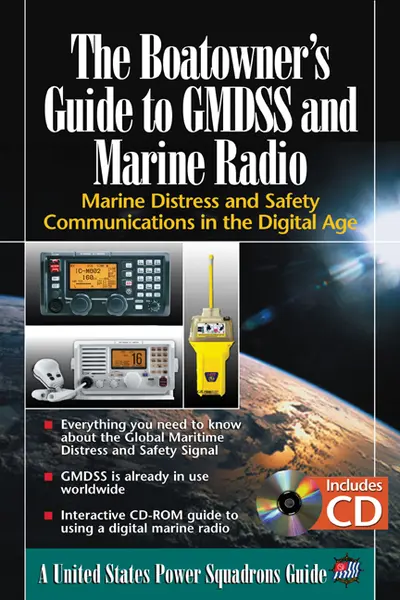My Account Details

ISBN10: 0071463186 | ISBN13: 9780071463188

Step 1 . Download Adobe Digital Editions to your PC or Mac desktop/laptop.
Step 2. Register and authorize your Adobe ID (optional). To access your eBook on multiple devices, first create an Adobe ID at account.adobe.com. Then, open Adobe Digital Editions, go to the Help menu, and select "Authorize Computer" to link your Adobe ID.
Step 3. Open Your eBook. Use Adobe Digital Editions to open the file. If the eBook doesn’t open, contact customer service for assistance.
The new digital Global Maritime Distress and Safety System(GMDSS) is revolutionizing emergency communications and international search-and-rescue at sea. Clearly and concisely, this one-of-a-kind guide presents what you should know about using digital marine radios for emergency assistance and enhanced safety.
Foreword
Preface
Chapter 1: What is GMDSS?Communications at Sea: A Brief History
Evolution of GMDSS
What Makes GMDSS a Superior System?
Sea Areas
Choosing the Correct Band
When Will GMDSS be Activated?
Chapter 2: VHF-DSC Outfitting
Features of VHF-DSC
Choosing a VHF-DSC Radio
Registering Your Radio
The Ship Station License
Installing a VHF-DSC Radio
Testing DSC Capabilities
Chapter 3: VHF-DSC Use – Routine Communications
Maritime Radiotelephone Frequencies
Watch Requirements
Calling Frequencies
Selecting the Working Channel
Procedures for Calling—Voice
Procedures for Calling—DSC
Procedures for Fleet Calling—DSC
Chapter 4: VHF-DSC Use—Emergency Procedures
A Digital Distress Broadcast is the Most Efficient Way to Call for Assistance
The Undesignated Distress Alert
The Designated Distress Alert
Acknowledging a Distress Alert
Relaying a Distress Call
Canceling a Valid Distress Alert
Canceling a False Distress Alert
Maintaining Radio Silence
Direction Finding
Prudence
Closure of a Distress Situation
Urgency and Safety Alerts
Chapter 5: Port Operations – Voice, Digital and AIS Systems
Coping with Crowded Harbor Traffic
Channel 13
Channels 06 and 22A
The Automatic Identification System
Chapter 6: MF/HF Services for Sea Areas A2 and A3
Boating Further Offshore
Calling and Distress Frequencies
Distress and Calling Procedures
Chapter 7: Inmarsat, NAVTEX, SafetyNET and Amver for Sea
Area A3
Inmarsat Network
NAVTEX
SafetyNET
Amver
Chapter 8: EPIRBs, SARTs and Other Useful Tools
The Emergency Position-indicating Radio Beacon (EPIRB)
Personal Locator and Man Overboard Beacons
Search and Rescue Transponders
Appendix 1. VHF Radiotelephone Frequencies – United States
Appendix 2. VHF Radiotelephone Frequencies—Canada
Appendix 3. VHF Radiotelephone Frequencies—InternationalAppendix 4. MF Single-sideband Marine Radiotelephone Frequencies
Appendix 5. HF Single-sideband Marine Radiotelephone Channels
Appendix 6. Emergency Radio Procedures
Appendix 7. Mayday Template
Glossary
References
Index
About the US Power Squadrons
CD-ROM Instructions
Need support? We're here to help - Get real-world support and resources every step of the way.